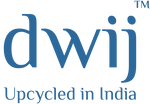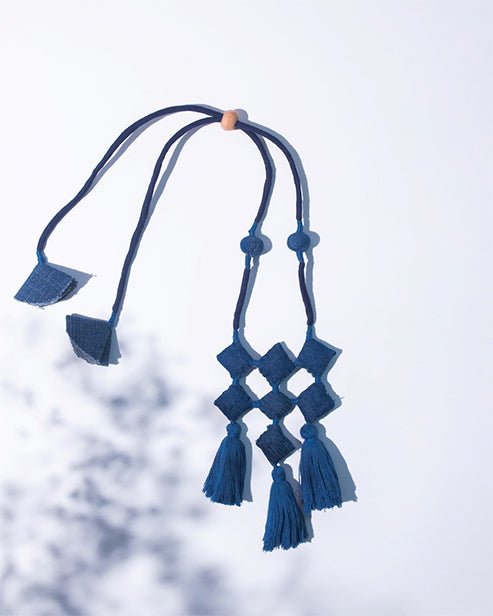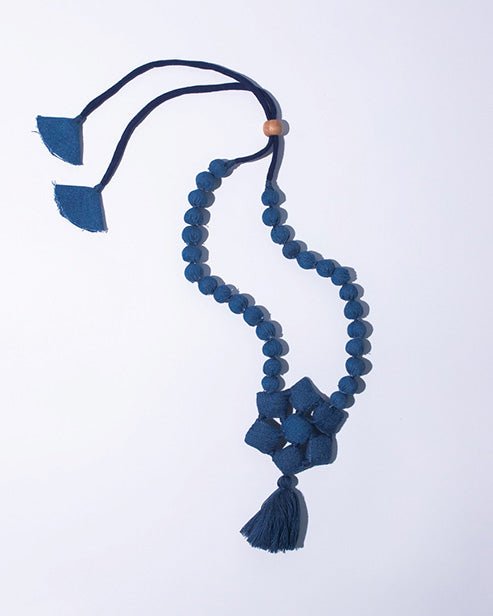Sustainable Development is a development that meets the needs of the present, without compromising the ability of future generations to meet their own needs. It's not about just swapping a toothbrush or using a cloth bag anymore, we need to holistically think about how we want our lives to change. This is important since AWARENESS => BEHAVIORAL CHANGE => ENVIRONMENTAL CHANGES. Let's collectively do something that will dominate our thoughts and find ways which would boost the economy by doing good to people and good to society. Let's learn the Alphabets with a different approach:
A- ANIMAL CRUELTY
Leather: Did you happen to wonder where the leather came from, when you make a purchase? Well, there isn’t any specific way to know this when you buy from mainstream markets. Many sources on the internet indicate that the animals are kept in narrow enclosures and often hung upside down (much like poultry chicken), alive but made to bleed to death before commencing the process of removing the skin. Leather is used by most of the high-end fashion brands, but the same brands do not talk about their sourcing. We humans are not spared of this cruelty, with rampant health issues such as cancers caused due to the chemicals used in the process.
Note: Although Vegan PVC leather helps get over this issue, it is not eco-friendly.
Wool: Wool, our favorite warm garment is not cruelty free too. It is popularly believed that sheep need to be sheared regularly, and garments are made from this wool. However, on the contrary, sheep produce the right amount of wool to protect themselves, which is naturally shed before spring. However, shearing after winter causes loss of wool production, thus most sheep are sheared when it's still cold. An estimated 1 million sheep die from cold, due to this practice. To quote an instance of other inhuman practices, sheep in Australia are bred to have wrinkled skin, which increases wool production. This leads to other side-effects such as flies laying eggs in their skin and maggots breeding on their skin. To prevent this, farmers have to pieces of skin, even without anesthesia. Once the wool production drops, they are ultimately slaughtered.
Cosmetics: Historically, cosmetics are first administered to animals for testing purposes. This practice commenced especially during the 1940's in response to serious side effects seen on humans caused due to cosmetics. Although today, many companies rely on ingredients that are already considered safe, animals are still used to test new cosmetics and personal care products. An estimated 0.5 Million animals every year are killed after these tests.
Fur: This is another high-end material often used in garment manufacturing. However, 85% of the fur industry skin comes from animals held captive in farms where they are severely crammed. Electrocuting the animal is a common practice, while an estimated 1 Billion rabbits are killed every year. The faeces produced at these farms releases an immense quantity of phosphorous, thereby polluting nearby rivers. It’s not surprising that China is the world's largest producer and exporter of fur. How do you feel now?
Feather: In this industry, feathers are usually supposed to be removed during the natural mounting cycle of the bird, which is the time when they shed their old feathers. However, the world is not so good as it sounds. As per Peta, workers in China forcefully restrain the geese and rip off their feathers as they struggle and scream.
Other Animal Issues
1.Whaling
2.Factory Farming
3.Poaching
4.Irresponsible dog breeding
5.Animals in Entertainment:
6.Dogfighting/Cockfighting
7.Habitat Loss & Climate Change due to illegal forest fires
8.Roadside/Illegal Zoos
9.Trophy hunting of endangered species
10.Exotic animal circuses
11.Animal Experimentation

B- BLACK FRIDAY
The growth of Black Friday consumerism is the best example of how brands can lure you to buy the products that you may not need and encourage hyper-spending through extreme discounts. According to the reports, every year we see many other countries pushing the same on their regional important festivals like the big Diwali sales, Christmas sales, New Year sales, etc. This kind of mindless and feverish consumerism is rampant in fashion, electronic goods, appliances, etc. Amazon, for example, now has Black Friday with a whole week of discounts – a trend matched by many competitors. This seasons also sees a rise in consumption of chocolates, candy bars, etc.
No Logo by Naomi Klein in 1999 describes this phenomenon as a world that has been colonised by marketing and branding. Makes us wonder if we really are COLONIZED? A very relevant documentary “The True Cost” beautifully features frenzied American shoppers on Black Friday to have a grab of all the goods they can carry. We are sure many of you in such countries have experienced the same at some point.
We need to recognize that we need to downsize our lives. Even simple measures when implemented by large population can yield remarkable results. The challenge however is to ensure that such measures are carried out joyfully, and do not affect your lifestyle in an adverse manner. You may soon realize that real pleasures and happiness in life could be found in many other things than shopping.

C- CIRCULAR FASHION
For a long time, the humans have adopted economic growth in a ‘linear’ manner. This means that raw materials are used for making a product, and after its use they are thrown away. This is the most basic form of development model, which results in highest generation of waste. The waste either finds its way into landfills, or gets incinerated. In an economy based on recycling, the materials are reused. For example, waste paper is used to make recycled paper, or waste glass is used to make new glass by melting away the old glass. In this type of development model, non-recyclable waste ultimately gets generated since after a few cycles, many materials lose their properties. The amount of waste getting generated over a period of time is however significantly less than linear economy.
In a ‘circular’ economy, products are designed such that they are reusable. For example, a pen is manufactured such that the ink may be refilled, or a household appliance is designed such that they are easier to repair. Post industrial waste including raw materials are also re-used to make new products. Once product is manufactured, it is used and reused in endless possibilities. Once the product or material becomes non usable, they are recycled into new products. In circular economy, a material is recycled only after significantly longer period of time.
Supporting circular economy is one of the foundations on which dwij has been built. It is encouraging to see that in the past one year, the interest in circularity has increased, among big brands, regulators, investors, and consumers. Although some effort exists, many designers still lack access to knowledge on how to design for a circular fashion system. While some of these results are good, the majority of textiles still ends in landfill, and further industry collaboration is required to turn the tide. Many European governments are leading the world in adopting circular economy programmes. Let us not leave India behind.

D- DIGNITY OF LABOUR
Many factory disasters that routinely occur, the biggest of which was the collapse of Rana Plaza building in Dhaka in 2013 killing 1134 garment workers. Many workers, especially in the early stages of the value chain, are still exposed to hazards such as factory fires and the use of hazardous chemicals. On average, one in twenty fashion industry workers suffers an injury every year.
When we interact with different manufacturers in the textile industry, the feedback we often get is "There is shortage of tailors in Mumbai and nobody is willing to do this work." This indicates a big disconnect between the unemployment statistics and the ground reality. If we look deeper, unlike in the past, the present-day youth want to be educated, and need recognition. Although we are to believe that there are enough people in this country to work on anything, but in light of various cases about dignity of labour, an uneducated tailor would want his child to be educated and never join this industry. This is relevant not just in textiles but in other fields such as carpentry, masonry, plumbing etc.
Dignity of labour is a must for both formal & informal sectors. Companies are increasingly implementing local measures to ensure safe and secure work environments in the supply chain, e.g. by investing in training programmes and support services. However, as production continues to shift between countries, more measures need to be put into place to secure the protection of human rights in those countries of the value chain.

E- ENVIRONMENTAL IMPACT
It is not difficult to understand that textile industry is one of the most polluting industries. In fact, approx. 2 Billion Tonnes of textiles are transported annually through air and maritime shipping. The total greenhouse gas emissions are up to 1.2 Billion Tonnes annually.
It is thus imperative that companies in this sector adopt significant sustainable measures since current business initiatives are highly insufficient to meet the climate targets. In fact, the overall impact on biodiversity loss is still not ascertained.
Fashion brands and manufacturers must follow due diligence and work collaboratively to implement a common understanding of the impact of the industry and define a baseline for biodiversity measures. More accelerated efforts are needed – not only to reduce the impact of the industry on the planet, but to reverse climate change.

F- FORCED LABOUR
Did you know that forced labour is most common in textile industry?
Gender equality means not just discrimination at the time of employment. Women and girls are most prone to gender-based discrimination, who are often subject to actions leading to physical or mental harm. The simple act of paying a woman lower salary as compared to her male counterpart is gender discrimination too, and this practice is rampant.
As reported by Reuters in Jan 2018, a child died on the premises of a textile manufacturing unit in Tamil Nadu where the parents work as bonded laborers. Employers often hold children to ensure that their parents return when they travel home for weddings or funerals. In this case, by the time their parents returned from a day journey, the child died of electrocution. Their parents had been working at the unit for nearly two years to pay debt of Rupees 60,000. Some 500,000 manual laborers in 11 industries in Tamil Nadu, including the multi-billion-dollar textile industry, are trapped in debt bondage. Dwij has highlighted such practices in its blog.
Many people confuse child slavery with child labour, but it is much worse. Whilst child labour is harmful for children and hinders their education and development, child slavery occurs when a child is exploited for someone else’s gain. It can include child trafficking, child soldiers, child marriage and child domestic slavery.
Did you think that all the above practices are a nightmare of the previous world era?
The truth is, all these including human trafficking are still active and possibly be happening in your own neighborhood too.

G- GREENWASHING
By greenwashing, we mean the act of an individual or a Company claiming to do better than it is actually doing. Most of the times, the truth is in the fine print. An example is a very popular packaged water company nowadays printing a label on their bottles as “100% recyclable”. This is written at strategic locations with strategic font, which makes a common man believe that all the bottles are actually recycled. Truth is that, these bottles “CAN” be recycled but not necessarily “ARE”. In fact, these bottles have always been 100% recyclable, even before they started printing the labels. So, what does it actually mean that the company is doing for the cause?
This has become a regular corporate practice across all industries. And why do they do this? Appearing to be green sells nowadays. One such example of Greenwashing is vegan faux leather.

H- HYDROCIDE
This isn’t a word that you’ll find in any current dictionary, but with the fashion industry and so many other sectors continually abusing our waterways, Hydrocide is becoming an all-too-common human activity in need of a name.
As per the film, the Buriganga river in Bangladesh is polluted daily by toxic leather tanneries, while, in Indonesia, the Citarum river is home to some 2,000 textile factories, dumping waste and effluent into the unregulated waters.
It’s time for us to demand that the brands we buy from act transparently and ensure their supply chains engage in responsible chemical treatment and better water stewardship. Do you know dry cleaning can also pollute environment? Read here.

I- I AM THE CHANGE
Needless to say, “I AM THE CHANGE”.

Read about our founder's lifestyle in bringing about the change.





